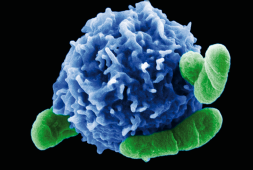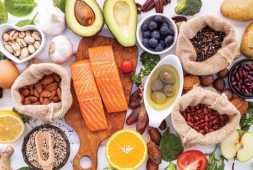
As reported in the National Library of Medicine, at least 1 in 6 adults has complained of having a migraine or a severe headache. While most of the current treatment for migraines is medication, some experts suggests lessening stress or reducing dietary triggers.
A recent case study explains how one man managed to achieve long-term migraine relief, while and not requiring as much medication, by consuming a diet that was rich in dark, leafy greens.
The study authors deduce that it’s the plant-based, whole food diet that could have resulted in these positive effects because of raising their beta carotenoid levels, or from identifying the potential triggers for those that suffer from migraines but do not properly respond to medication.
The Journal of Headache and Pain reports that migraines rank as one of the leading causes of global disability. When it comes to young women, it is actually considered a leading cause.
Within the United States alone, more than 40 million people have complained about this debilitating neurological disorder. But while treatments are limited for the most part, which means that the more conventional approaches to treatment may not always bring about life-long or effective improvements.
One 60-year old man was interviewed by the authors of the recent case study which was published in BMJ. He had been living with migraine episodes for over 12 years, but at one point, it became a chronic case for 6 months.
While he had gotten the usual standard treatment, he was also made to eliminate the usual known triggers for migraines from his diet while also engaging in stress reduction techniques like yoga and meditation. But unfortunately, these also failed to remove his symptoms.
As a part of the study on the link between migraines and diet, he was made to switch to a plant-based diet known as the Low Inflammatory Foods Everyday (LIFE) diet. Just a few weeks after he changed his diet, he began to feel remarkable relief from his otherwise frequent and severe migraine episodes.
So far, the authors of the study believe that his case is the one representation of the longest a migraine has managed to go into remission due only to dietary intervention. Because of this, they also conclude that while more research is still necessary, a whole food, plant-based diet could possibly work as migraine treatment.
What Exactly Is a Migraine?
A migraine can be a major, severe, and debilitating disorder with two specific types known as episodic and chronic.
For people that suffer from episodic migraine, they feel the symptoms and related pain of migraines on less than 15 days per month. But for those that feel their migraine symptoms on 15 days a month of more for over 3 months, then doctors classify it as a chronic migraine.
According to ScienceDirect, ‘a migraine episode typically lasts 4 -72 hours and involves a severe, throbbing headache that gets worse with movement or exposure to light, sound, or smell. These headaches may be followed by a phase that involves tiredness, poor concentration, and sensitivity to sound, called a “migraine hangover.”’
How ‘Thinking Outside the Dots’ Will Help
Most of the current therapy for migraines involves taking medication and avoiding certain triggers. There are also a bunch of diets that may help such as the ketogenic diet, low fat diet, and low glycemic diet.
Senior author of the study, Dr. David Dunaief, lead author Dr. Brittany Perzia, and contributing author Dr. Joshua Dunaief, looked into the benefits of the LIFE diet and it’s use of dark, leafy vegetables and how they are essential sources of a number of vitamins, minerals and antioxidants.
For the study participant, after being made to switch to the LIFE diet, he managed to report a major reduction in the frequency of his migraine episodes from 18 to 24 a month to just one a month during his second month follow-up appointment. The researchers also share that his relief was considered quite rapid.
Dr. David Dunaief shared, “This patient was incapacitated by migraines on an almost daily basis, prior to starting the LIFE diet. At the 2-month mark, the patient stopped his migraine medications. At 3 months, there was a complete cessation of migraines.”
What Foods to Eat on the LIFE Diet
During his diet, the participant was made to consume one 32-ounce (oz) LIFE smoothie every day, which had ingredients like spinach or kale, flax seeds, and blueberries. He was also made to take 5 oz of dark green, leafy vegetables while limiting his intake of whole grains, oils, dairy, starchy vegetables, and red meat on a daily basis.
There were also former studies from 2019 and 2020 that looked at the LIFE diet as well.
3 months after the participant had relief from his migraines, he decided to put back some of his past foods and drinks to his diet in a 3-month trial period. But while he found that salmon, egg whites, and iced tea – which were staples of his former diet – did trigger moderate, short-lived headaches which aspirin managed to handle.
But since moving to the LIFE diet, he has managed to remain migraine free for the past 7-years.
Why Are Dark Green and Leafy Vegetables Better?
According to the researchers, it’s their belief that this positive change could be coming from carotenoids, or beta carotene, which happen to be quite abundant in darker, leafy greens. They also conclude that the diet managed to also help him identify which foods normally trigger his migraines as well.
Beta carotene or carotenoids happen to be compounds that can lessen systemic inflammation and oxidative stress, both of which are implicated when one has a migraine.
Even though the man did have a primarily plant-based diet that was rich in carotenes even before he began the LIFE diet, explaining he ate a lot of sweet potato every day, he claimed he still had severe migraines.
Dr. David Dunaief told Medical News Today (MNT) about this difference, saying, “What I found from years of practice is that beta carotene supplements, green vegetable powders, and carotenoid-rich starchy vegetables such as sweet potato don’t work. They raise the beta carotene levels but they don’t have clinical effects.”
The researcher added though that “Beta carotene supplements have been found to be potentially dangerous, increasing the risk of lung cancer in smokers and increasing heart disease.”
He also added that the LIFE diet could be a safe, nutrient-rich way to better treat migraines and other forms of chronic diseases.
How Some Phytonutrients Could Reverse Symptoms
The same authors did former studies that looked into the LIFE diet in 2019 and 2020, and found that people who tried the diet had significantly reduced C-reactive protein (CRP) levels. Those with a higher level of CRP, they tend to have more inflammation within the body which translates to a higher risk of related diseases such as cardiac or rheumatologic.
For the present report, the authors discovered that the man’s CRP levels managed to remain mostly stable, which they believe is a reflection of the fact that he was already on a mostly healthy plant-based diet.
The team, therefore, chose to focus on raising his levels of phytonutrients or plant nutrients.
For Dr. David Dunaief, he suggest that the migraine-reducing benefits of the LIFE diet could possibly be due to the phytonutrients in plants rather than just the beta carotene alone.
He explained to MNT, “We used the rise in blood levels of beta carotene as a surrogate market of phytonutrients. The increasing phytonutrients most likely caused the reversal of migraines.”
Why Switching Diets Might Not Work For Everyone
Medical Director of the Dent Neurologic Institute and Professor of neurology and neuro-oncology at the State University of New York at Buffalo, Dr. Laszlo Mechtler, he warned that not everyone will respond to changes simply due to dietary interventions.
However, he also told MNT, “It may be plausible that some patients could achieve relief by changing to a plant-based [LIFE] diet, which does not include any foods that would cause inflammation. Research has shown that alterations to the gut microbiota can have a significant impact on migraine.”
When it came to dietary changes, Dr. Mechtler went on to say, “A patient’s diet should always be evaluated, especially when certain foods are thought to be headache/migraine triggers. That being said, I would not typically advise my patients to completely upend their typical dietary regimen. It is also important to note that such dietary changes cannot be taken lightly, as it is important for individuals to get the proper nutrition.”
He also focused on the importance of educating people about nutrition, saying that many of them don’t actually consume enough vegetables, and it’s in increasing the intake of veggies that has led to “an improvement in migraine/headache symptomology.”
Looking At the Big Picture
For the research team behind the man’s case, they believe that his incredible improvement from migraines shows that most people suffering from migraines or migraine-like disorders could very well benefit from following the LIFE diet.
Dr. David Dunaief explains, “It is so important what you put in your mouth. The LIFE diet is an effective complement to conventional medicine and may be a route to reversing, preventing, and treating chronic diseases with lasting results.”
But he also stressed that there is still a need for bigger, prospective, randomized clinical trials that look at whole food and plant-based diets to best determine which people and which of their conditions would benefit from this diet.
He added,“In the meantime, there’s little downside for patients, when properly managed by their physicians, to trying this diet for a few weeks, or ideally, months.”



